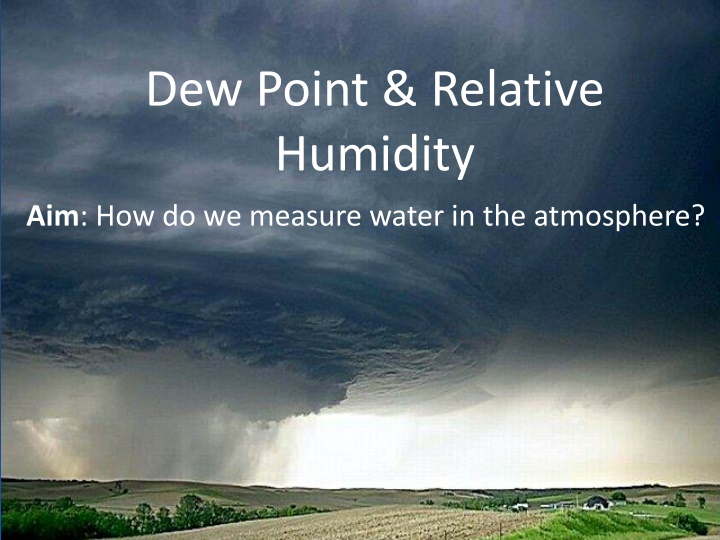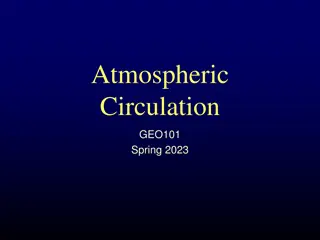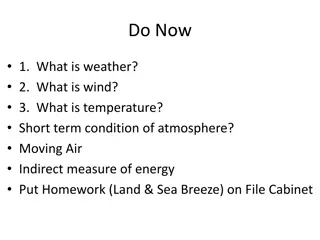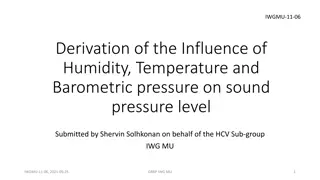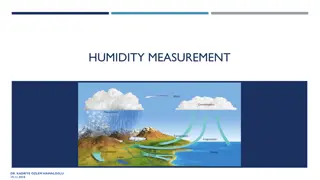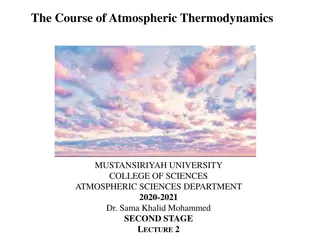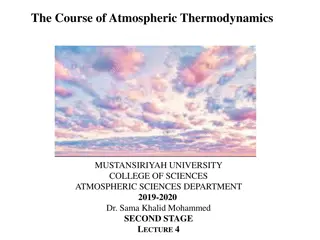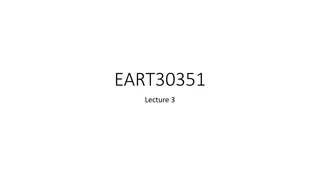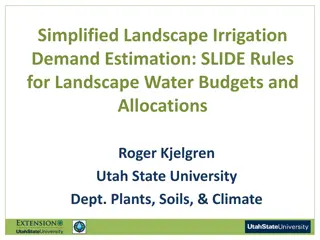Humidity and Dew Point in Atmospheric Water Measurement
Relative humidity measures the amount of water vapor in the air compared to its capacity, influenced by temperature. Saturated air forms clouds at 100% humidity. Dew point is the temperature at which air becomes saturated, leading to condensation and cloud formation. By comparing air temperature to the dew point, one can estimate relative humidity and predict cloud formation and precipitation. Using a psychrometer helps in finding dew point temperature and humidity accurately.
Download Presentation

Please find below an Image/Link to download the presentation.
The content on the website is provided AS IS for your information and personal use only. It may not be sold, licensed, or shared on other websites without obtaining consent from the author.If you encounter any issues during the download, it is possible that the publisher has removed the file from their server.
You are allowed to download the files provided on this website for personal or commercial use, subject to the condition that they are used lawfully. All files are the property of their respective owners.
The content on the website is provided AS IS for your information and personal use only. It may not be sold, licensed, or shared on other websites without obtaining consent from the author.
E N D
Presentation Transcript
Dew Point & Relative Humidity Aim: How do we measure water in the atmosphere?
Relative Humidity A measure of how much water vapor is actually in the air compared to the amount the air could possibly hold Warm air can hold more water vapor than cool air This means that in desert areas, relative humidity is low, but in jungles it is high
Saturated air has a relative humidity of 100%, which is when clouds or fog begins to form
Dew Point The temperature at which air is saturated with water vapor Depends on amount of water vapor (humidity) in the air. Increase the humidity, Increase the dew point Direct relationship
Warm wet air rises and cools to the DEW POINT Temperature, then water vapor CONDENSES to liquid and FORMS CLOUDS
Temperature and Relative Humidity % As air rises and cools, it becomes saturated, and must condense (form clouds) Hot air can hold more water vapor, but you must compare air temp. to dew point temp. to estimate relative humidity.
Relationship between: Humidity and Dew Point temperature. If the % of humidity increases (more water vapor in air) then the dew point temperature increases, getting closer to the actual air temperature. This means more chance of clouds and precipitation.
Using a psychrometer to find: Dew point Temperature & Humidity: First, allow wet & dry thermometers to stop changing (takes a few minutes). Take difference between wet & dry temperatures (subtract) this is depression. Use ESRT p.12 chart with dry (air) temperature row and depression (difference) column. Where they intersect on chart record dew point temperature or humidity.
Wet bulb will always be cooler Evaporation of water into air, cools the wet-bulb thermometer If there is a big difference (depression) , that means the air is dry (low humidity %)
U.S. Current Relative Humidity & Dew Point Readings *Click on Map
